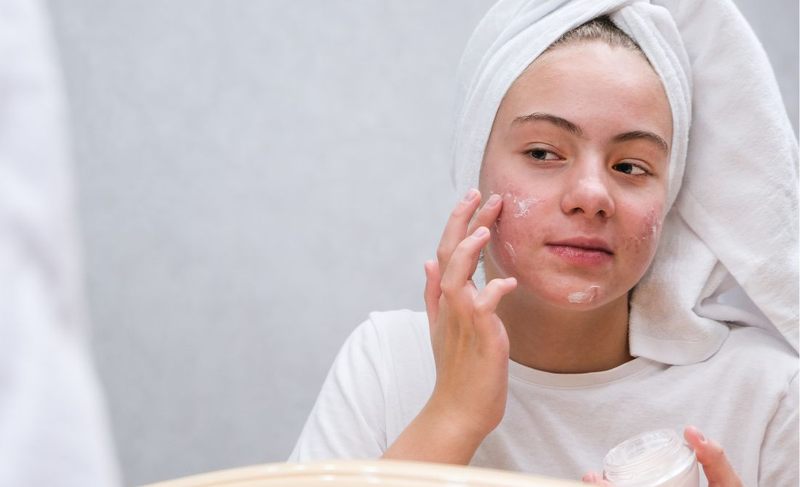
Red Pimples: Causes and Effective Treatments
What Are Red Pimples?
Red pimples are one of the most common inflammatory acne types that cause pain, swelling, and loss of confidence. They usually appear as small, red bumps under 5 mm in diameter, without a visible white or yellow head. When touched, they feel sore and tender. If untreated, red pimples may develop into pustules, nodules, or cystic acne, leaving dark spots and scars.
How Red Pimples Develop
Red pimples are formed when excess oil and dead skin cells clog pores, creating the perfect environment for Propionibacterium acnes bacteria to grow. This leads to inflammation, swelling, and redness on the skin surface.
Without proper care, red pimples can spread to other areas of the face and worsen over time.

Common Causes of Red Pimples
Several factors contribute to the formation of acne inflammation, such as:
-
Overactive sebaceous glands producing too much oil.
-
Bacterial buildup inside clogged pores.
-
Hormonal imbalance, especially excess androgen.
-
Stress and lack of sleep.
-
Diet high in sugar, dairy, or oily foods.
-
Allergic reactions to cosmetic products, especially those with corticosteroids.
-
Side effects of certain medications.
Effective Treatments for Red Pimples
1. Topical Medications
Dermatologists often recommend:
-
Benzoyl Peroxide: Kills acne-causing bacteria and reduces inflammation.
-
Salicylic Acid (BHA): Penetrates oil, unclogs pores, and reduces acne formation.
-
Retinoids (Adapalene, Tretinoin, Tazarotene): Promote cell turnover, dry out pimples, and fade dark spots.
-
Topical Antibiotics (Clindamycin, Erythromycin): Usually combined with benzoyl peroxide for stronger effects.

2. Oral Medications
For moderate to severe cases of acne inflammation, doctors may prescribe:
-
Oral antibiotics: Such as doxycycline, minocycline, or azithromycin.
-
Birth control pills (for women): Regulate hormones and reduce acne breakouts.
-
Anti-androgen medications: Spironolactone helps block androgen activity in sebaceous glands.
3. Skincare and Lifestyle Tips
-
Avoid squeezing or popping red pimples to prevent scarring.
-
Wash your face with a gentle cleanser twice daily.
-
Keep your skin hydrated but not oily.
-
Eat a balanced diet, reduce processed foods, and drink enough water.
-
Manage stress and get enough sleep for skin recovery.
Conclusion
Red pimples may look small, but they can cause discomfort, scars, and long-term skin problems if ignored. By identifying the causes and choosing the right treatments, you can control inflammation, protect your skin, and restore confidence. For persistent or severe cases, consult a dermatologist for proper medical treatment.
- 5 Mẹo giúp bệnh nhân tiểu đường vượt qua mùa nắng an toàn ! - February 1, 2024
